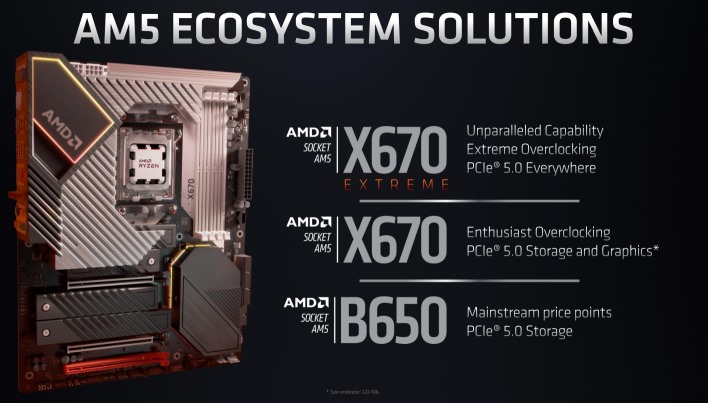Leak Claims AMD Zen 4 Ryzen 7000 CPUs May Offer Limited Overclocking Potential
Here's a leak that is not so promising: supposedly, AMD will be locking down voltage control on its Ryzen 7000-famiily processors such that users won't be able to overvolt. Overvolting is a key part of overclocking, as it allows the processor to better maintain clock rate stability, albeit at the cost of extra power (and thus heat.)
This unsourced leak comes by way of WCCFTech, so take it with however many grains of salt that you wish. For its part, AMD has already promised "Extreme Overclocking" capabilities on its X670-chipset motherboards, so this could be completely false, or it could alternatively be a misunderstanding. After all, the Ryzen 7 5800X3D does not allow overvolting; it's possible that this limitation only applies to Zen 4 processors with 3D V-Cache.
As far as anyone knows, the first wave of Zen 4 processors will not include 3D V-cache, but they're expected to come later. WCCFTech's remarks came as part of a leak that includes the clock rates of AMD's upcoming chips. We already knew the names and core configurations of the parts, but the clock rates are new data.

We're hoping that if the voltage-control lockdown rumor is true, then that it's at least applicable only to the 3D V-cache models. While it does seem like AMD has probably pushed these processors close to their limits to begin with—which is exactly what it said it would do—it's always nice to get a few-hundred extra MHz out of your CPU when you need it.


